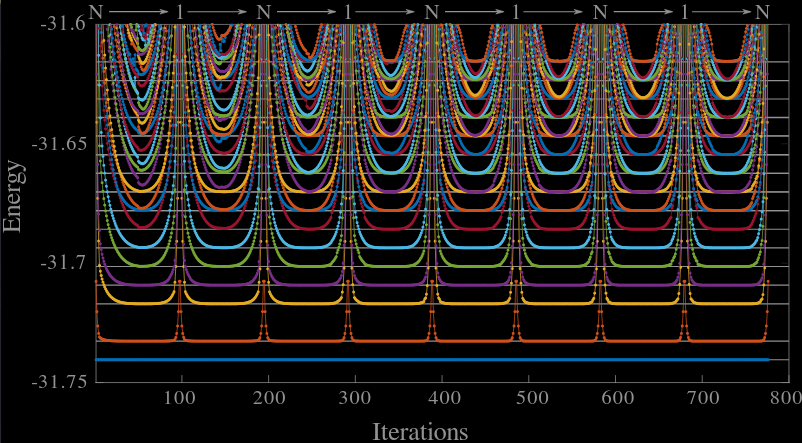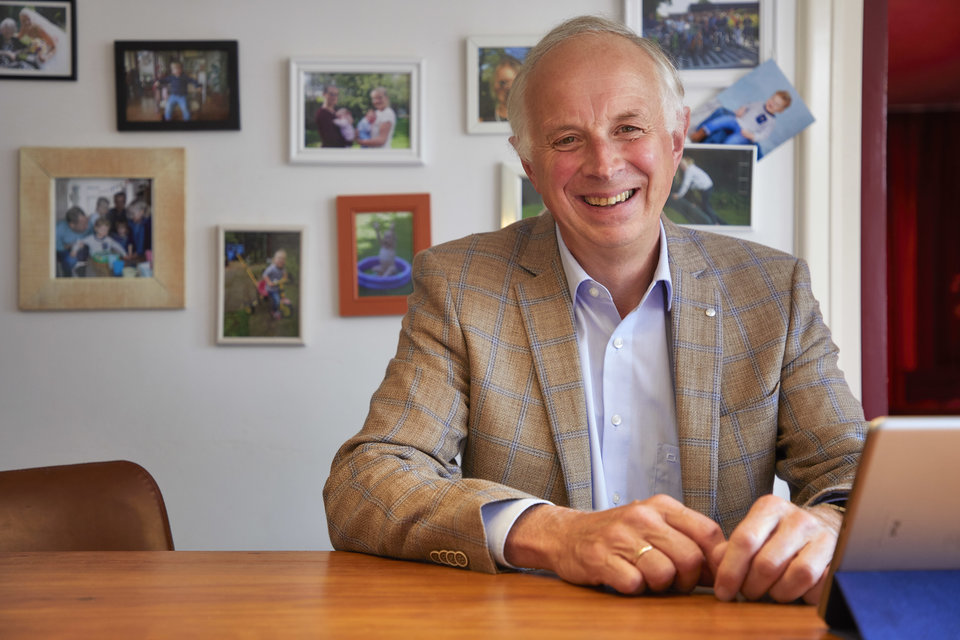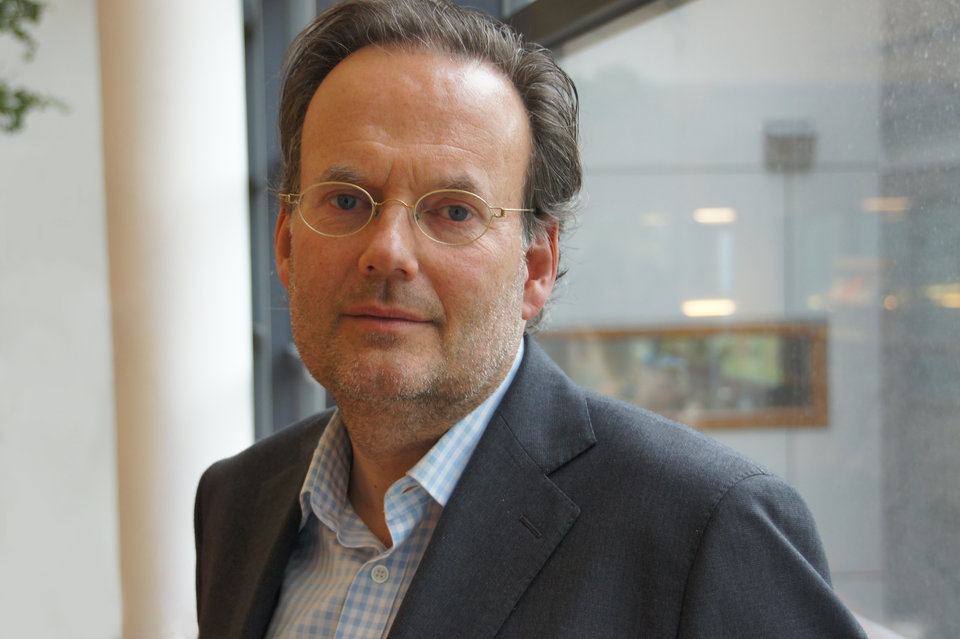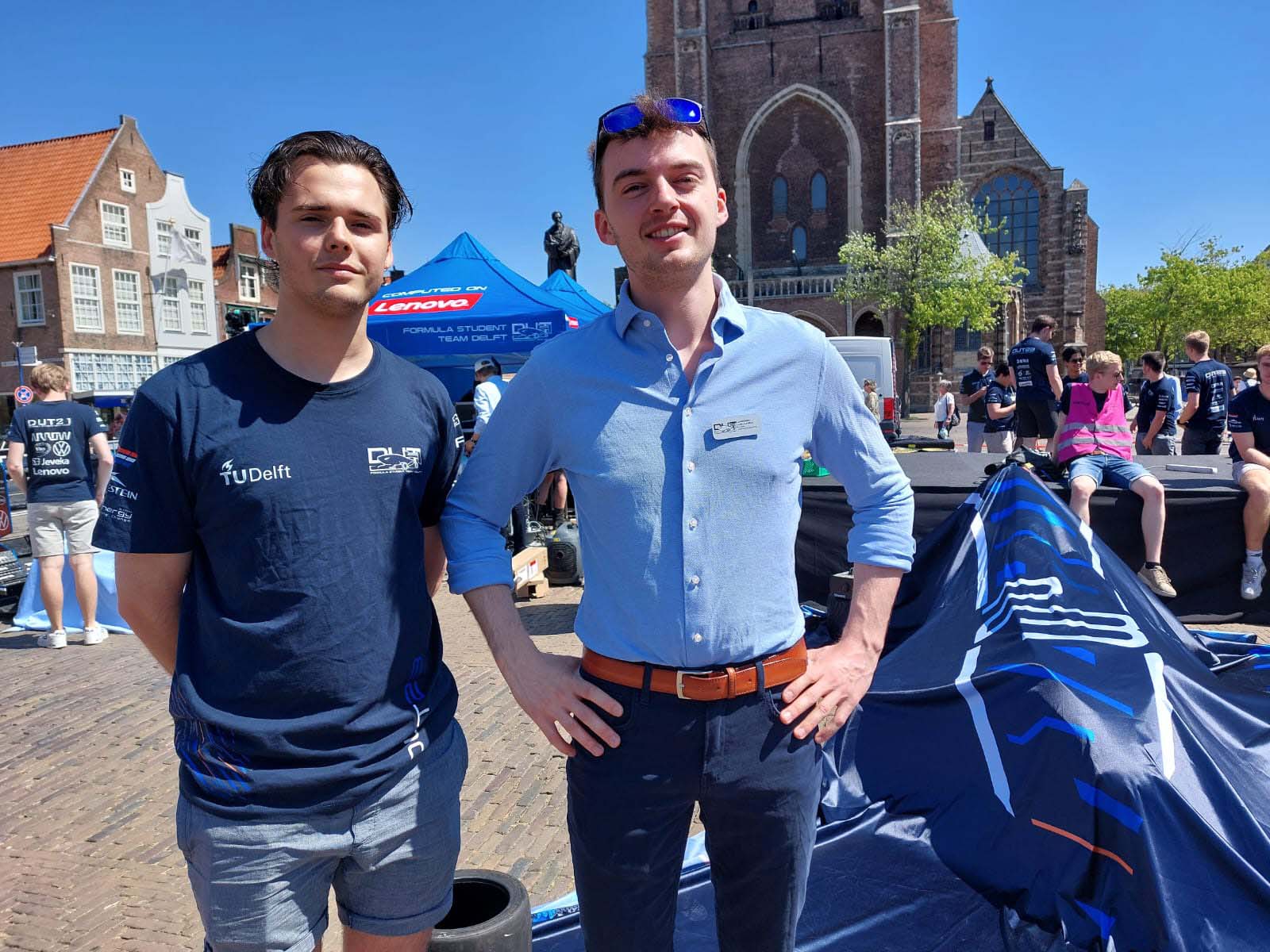Supercomputing power for racing cars and quantum states
A remarkable service on the TU Delft campus: a supercomputer for anyone in need supercomputing power. DelftBlue, as the new supercomputer is called, has now been in use for over a year. Researchers and students make full use of the 1.05 petaflops, 10,000 CPU cores and more than 200 computing nodes – a doubling in size is already planned. From fundamental quantum research to designing electric racing cars, what are their experiences like?
Insane computing power
“I really can't survive without DelftBlue,” says Natalia Chepiga, assistant professor at the Kavli Institute of Nanoscience. “The pandemic delayed the delivery of the new supercomputer; it was the most difficult time of my career. When DelftBlue finally arrived, my life began again”. Jasper Vallinga and Lars van der Zwan, part of the student team building the electric racing car DUT23, concur. The aerodynamic design of their car would have been impossible without DelftBlue. “We got an insane amount of computing power.”
Quantum phase transitions
Chepiga uses the supercomputer to delve into the fundamental properties of quantum matter. “A material consists of countless bouncing atoms that influence each other. A change in external conditions can cause a sudden phase transition in such a material, for example from a liquid phase to a solid phase when the temperature is lowered. My computer simulations reduce this complexity to its most fundamental tenets: a few thousands highly correlated electrons at extremely low temperatures. If we see phase transitions in this theoretical system, then they should happen in real materials, too. Our simulations are unthinkable on a normal computer.”
If we see phase transitions in this theoretical system, then they should happen in real materials, too. These simulations are unthinkable on a normal computer.
Natalia Chepiga, Assistant Professor at the Kavli Institute of Nanoscience
Aerodynamic design
The Formula Student Team Delft team uses DelftBlue to optimise the design of their car. Vallinga is responsible for the aerodynamics. “In the past, it was only just possible to simulate an air stream flowing in a straight line over the car. But in real racing conditions the aerodynamics are most important for cornering performance, which involves much more complicated flow behaviour.” Calculating such a more complex situation would take a week or two without a supercomputer. “And then you only know afterwards whether the simulation failed or whether the design was completely wrong. We just don't have that time. With DelftBlue it takes just about eight hours. As a result, we can continue to refine our designs, making the aerodynamic design of the car much better.”
Snowball effect
“An additional advantage is that apart from optimising the aerodynamics, we can also calculate the aerodynamic performance. Our design choices have an impact on rolling resistance, force moments, and so on. By simulating these effects, we can make smarter choices in areas such as vehicle dynamics, propulsion, suspension set-up and traction control. The simulations therefore have a snowball effect for the entire car.” Access to a supercomputer on campus is all the more convenient as the Formula Student Team Delft only has a few months to design and build their car. “We can use a national calculation service via the cloud, but there the calculation time is equally divided among the many users. We need a lot of computing power in a short period of time.”
Always available and helpful
Chepiga: “What I really like about DelftBlue is the efficient use of processors and working memory. My simulations require a lot of memory but not that many processors. DelftBlue then shares my space on the supercomputer with users who need less memory and a lot of processors.” Vallinga and van der Zwan praise the DelftBlue team. “We have little time for our simulations and yet we have not experienced any delays. This is not only because of the ease of use and clear manuals, but also because of the people at the Delft High-Performance Computing Centre, of which DelftBlue is a part. They respond quickly, are always available and helpful. We are incredibly happy with the service. We look forward to working with DelftBlue again next year.”
My research really can't survive without DelftBlue
Natalia Chepiga, Assistant Professor at the Kavli Institute of Nanoscience
Please, a little more
In the meantime, work is ongoing to further improve and expand DelftBlue. Is there room for improvement? Chepiga doesn't have to think long about that: more disk space. “The working memory, which is normally expensive to purchase, is generous. But the much cheaper static storage is just not enough for me. Please, a little more than 5 terabytes.” Vallinga and van der Zwan have to think about it longer. “It's just a minor detail: we worked a lot on the education partition of DelftBlue. It has a maximum simulation duration of 24 hours, but we sometimes just exceeded that. Fortunately, this was solved by getting access to the research partition.”
Day and night
DelftBlue is used day and night, seven days a week. “There isn't a time slot in which I haven't used DelftBlue yet”, says Chepiga. Finding sufficient computing power is always the biggest challenge in her field, just as it is indispensable for an optimal racing car design. Vallinga: “You can be sure that the commercial Formula 1 racing teams have much more computing power than we do. No one is allowed to say anything about it, but their lists of sponsors betray a lot. DelftBlue proudly features on our car and sponsor list.” Chepiga: “This is the first time in my career that I don't have to worry about computing power. I can do as many simulations as I want.” The fact that DelftBlue is being expanded, with a doubling of its size, is therefore very welcome news for the researcher: "The more people discover DelftBlue, the more users there will be, I'm afraid."
With DelftBlue, our calculations take just about eight hours, instead of a week. As a result, we can continue to refine our designs, making the aerodynamic design of the car much better.
Jasper Vallinga, Formula Student Team Delft
Thanks to DelftBlue
DelftBlue clearly has an impact. Chepiga: “Our simulations do not immediately lead to breakthroughs in the field of materials. We are in the most fundamental corner of the research spectrum. We’re not trying to explain what has already been observed experimentally, we are looking for surprises on a fundamental level. Thanks to DelftBlue we already predicted new type of quantum phase transition in so-called Mott insulators. Our work is a necessary step towards quantum computers and new generations of batteries.” DelftBlue thus contributes to tackling increasingly complex societal challenges, such as the energy transition. And winning awards, adds Vallinga: “We have completed our simulations and are currently building the first aerodynamic elements. The racing car will on the road for the first time next week. If we win prizes — and we certainly intend to — it will be also be thanks to DelftBlue.”
Learn more about DelftBlue on the website of the Delft High Performance Computing Centre.







